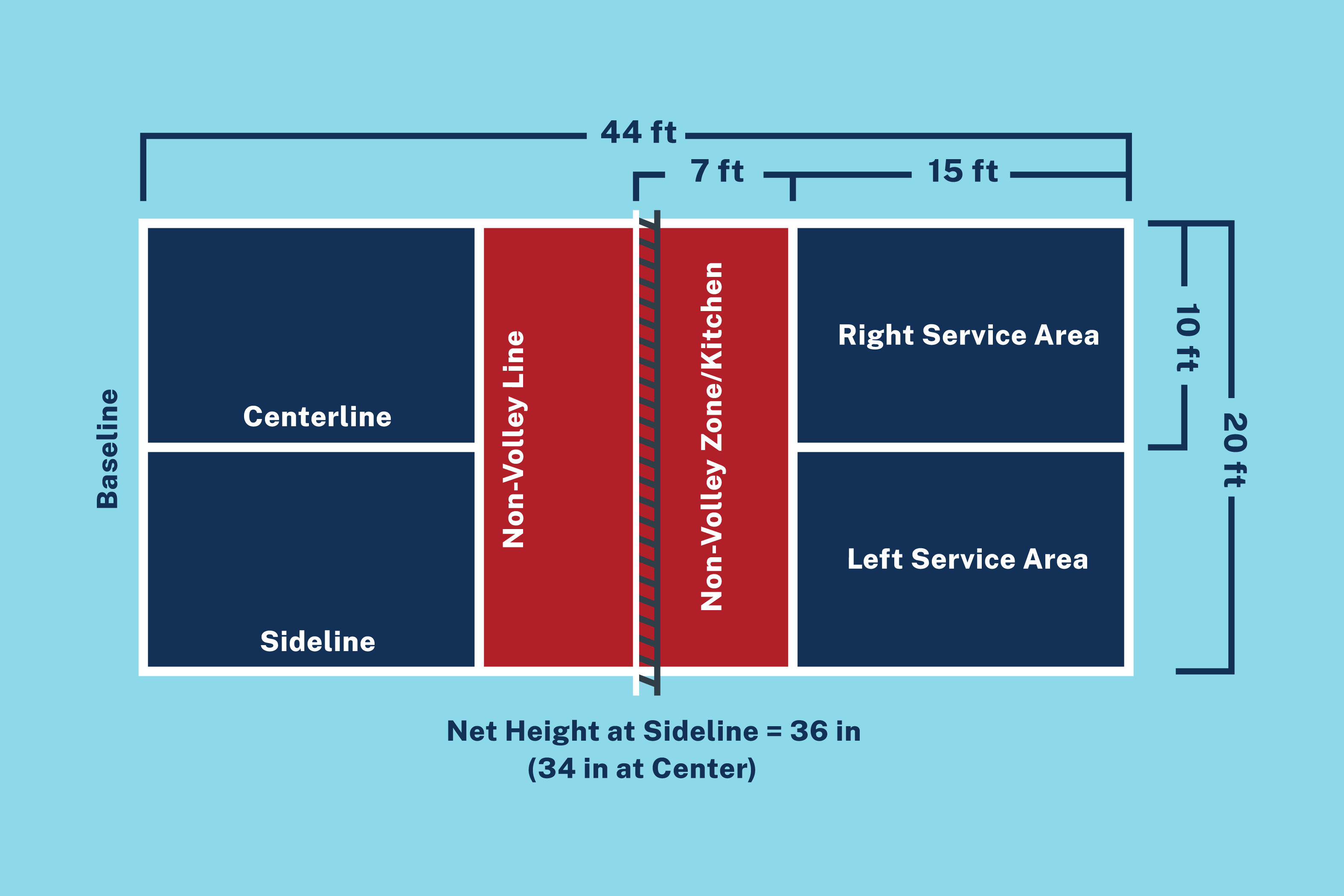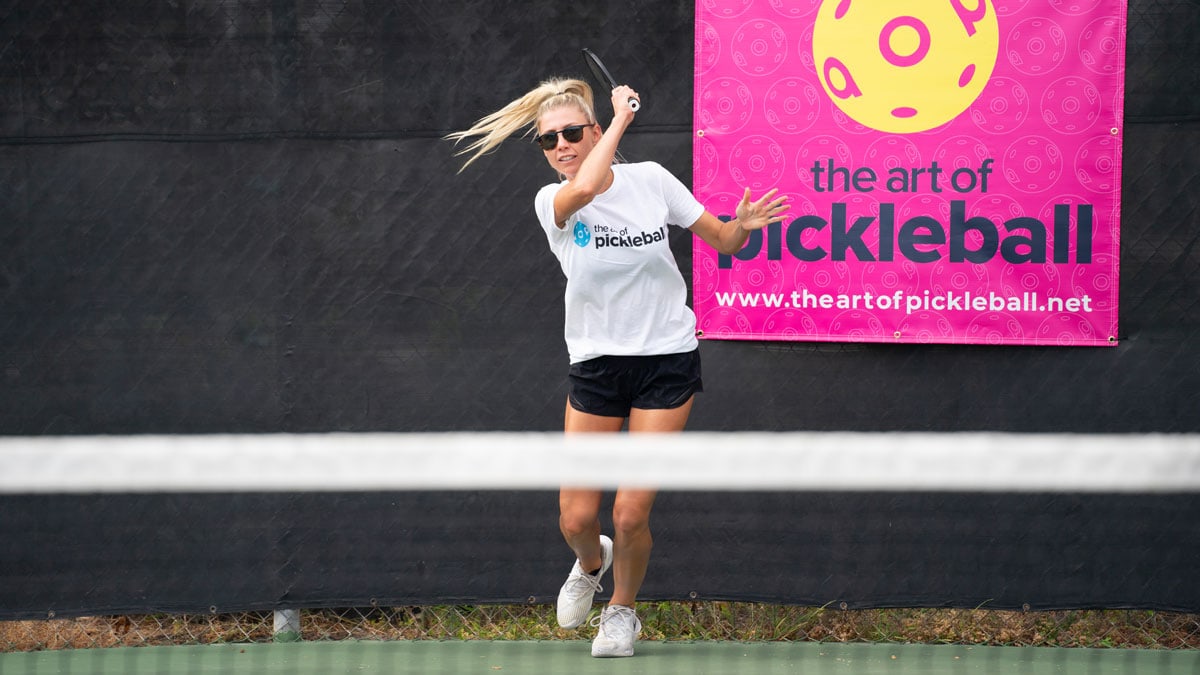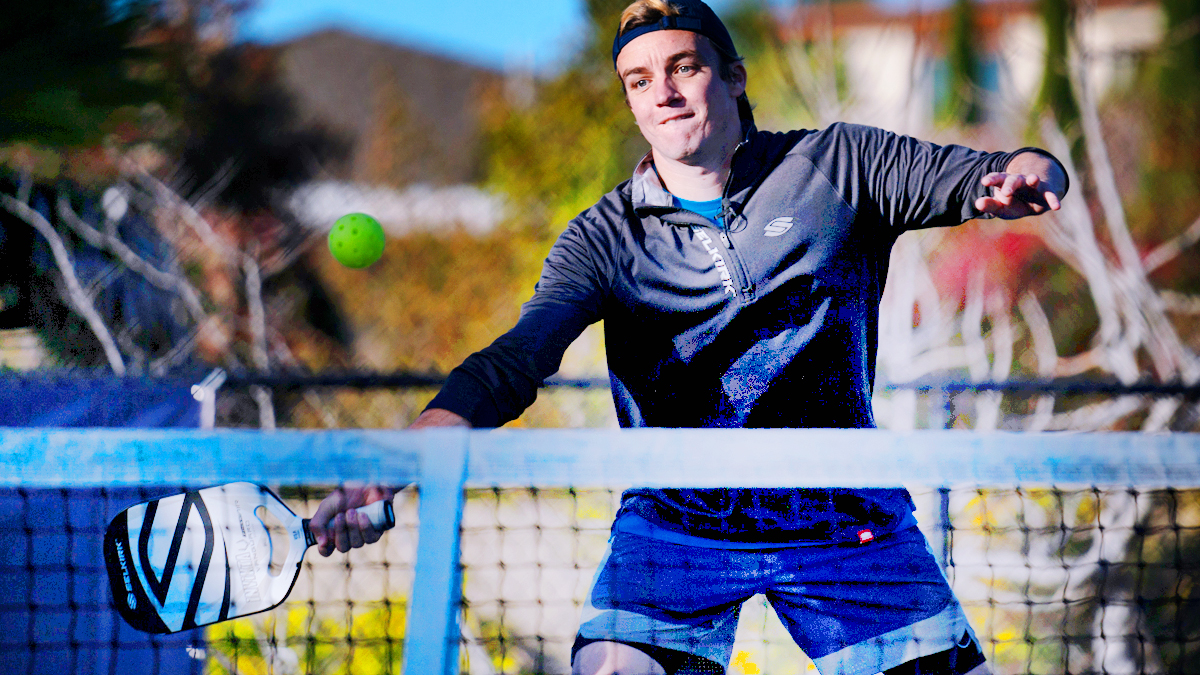The Pickleball Baseline: Mastering the Edge of the Court
Pickleball is more than just a game; it’s an exhilarating blend of skill, strategy, and instinct that captures the hearts of players around the world. At the heart of this dynamic game lies the pickleball baseline, a strategic cornerstone that dictates play and influences the game’s rhythm. The baseline is not merely a line on the court; it is the playground where athletes orchestrate their movements, employing a variety of offensive and defensive techniques. Understanding the nuances of the baseline can elevate a player’s game, enhancing their ability to control the flow and pace of the match. This article dives deep into the significance of the baseline, helping players of all levels refine their skills to dominate the court.
Understanding the pickleball baseline: defining its significance

The foundation of the game: a base for offense and defense
The baseline serves as the backbone of pickleball strategy. It is a significant boundary established at each end of the Pickleball court, running the entire width and defining the parameters of play. Beyond its physical attribute, it symbolizes both opportunity and limitation. Players often begin rallies from this critical line, serving as a launching pad for offensive maneuvers and a fallback point for defensive plays.
From the moment a serve is initiated, the baseline underscores the rules of engagement. Players must have at least one foot behind this line, signifying readiness and positioning for responsive play. This boundary not only outlines where players can stand when serving or receiving but also delineates the playing area. When a ball is in play, stepping on or over the baseline can lead to faults, making it essential for players to gauge their position cautiously.
Controlling the pace: dictating the flow of play
Control is a central theme in any sport, but in pickleball, it is especially vital. The baseline allows players to dictate the pace of play. By maintaining a solid position behind the baseline, players can launch powerful drives and relaxed drop shots. They possess the authority to control rallies, turning defensive situations into offensive opportunities. For instance, by using the baseline as a springboard for well-placed shots, players can force their opponents to react hurriedly, opening up scoring angles and maintaining strategic dominance.
Moreover, the psychological aspect of enduring rallies from the baseline cannot be understated. The steady exchange of shots, mixed with strategic lobs or drop shots, cultivates an unpredictable game that keeps opponents guessing. This fluidity shapes the mental landscape of matches, where confidence stems from the mastery of this crucial court area.
Key techniques for the pickleball baseline: mastering the basics

Footwork and positioning: optimizing your baseline presence
Footwork is an art form that can profoundly influence baseline play. The key to success lies in understanding how to position oneself effectively around the baseline. Players should strive to maintain a balanced stance while remaining alert for swift movements. Agile footwork allows players to cover the court effectively, reacting to incoming shots while remaining poised to strike back.
An effective baseline player often uses small, quick steps to adjust their position, enabling them to execute well-placed shots or defensive maneuvers without losing their balance. A balanced player not only has a wider range but retains the necessary control to produce quality shots.
Additionally, when positioned properly, players can read the play more effectively, gauging when to advance or retreat based on their opponent’s actions. This adaptability is paramount in pickleball, as players who read the game well can capitalize on openings or anticipate defensive strategies.
Shot selection: choosing the right weapons for the situation
Once players have established their footwork and positioning, the next step is mastering the art of shot selection. The baseline offers multiple shot options each with its grading of risk and reward. From groundstrokes that use the entire length of the court to delicate drop shots that require finesse, players must understand which shot fits different game situations.
- Groundstrokes: A staple in any baseline player’s arsenal, groundstrokes are fundamental for transitioning the ball across the net with precision and power.
- Lobs: The lob is a strategic option that can be used defensively to push the opponent back while simultaneously posing a threat of height.
- Drop shots: Often used as a surprise element, drop shots can create scoring opportunities through deception.
Understanding when to use each of these shots can be the difference between maintaining control of a rally and losing it. Players need to be analytical, assessing their opponent’s position and gauging their own strengths to select the best shot.
Advanced baseline tactics: strategies for experienced players

The baseline rally: mastering the art of consistency
For experienced players, the essence of the game transforms into consistency. Engaging in baseline rallies necessitates a blend of precision and strategic planning. In these exchanges, the goal is not merely to hit the ball back and forth but to find angles and set your opponent up for an error. Consistency stems from a robust understanding of one’s shots, where players can place the ball with tactical accuracy.
Maintaining an organized approach during rallies allows you to dictate the tempo and condition the game. Rather than relying on power alone, a seasoned player recognizes that play style should include lulling an opponent into a specific rhythm before introducing surprise shots to disrupt the flow.
The baseline lob: controlling the vertical dimension
One effective tactic from the baseline that can change the game’s dynamics is the lob. Despite often being perceived as a defensive move, the lob can monopolize vertical space, forcing opponents into uncomfortable positions. By utilizing lobs, players gain control over the height of the play, creating opportunities when executed correctly.
Timing becomes crucial; a well-timed lob can sweep opponents off guard, especially when they crowd the net. Players should focus on observing their opponent’s positioning and executing lobs to exploit any moment of vulnerability.
The baseline drop shot: using deception and finesse
The drop shot from the baseline is another advanced tactic that requires strategy and nuance. Players must master the technique of using this shot without revealing their intentions. A successful drop shot is about timing and subtlety maintaining a casual appearance while executing a well-aimed, soft shot that lands just over the net.
This shot not only surprises the opponent but also opens up drastic opportunities for scoring. It’s essential that players remain unpredictable in their shot choices, mixing up their play to keep their opponent guessing.
Common questions
Is the baseline always the best place to be in pickleball?
While the baseline offers excellent positioning for controlling rallies and setting up shots, it may not always be the optimal spot, especially as the game transitions to the net.
What is a “baseline groundstroke” in pickleball?
A “baseline groundstroke” refers to a shot made from the baseline area using a continuous swinging motion to send the ball over the net with accuracy and power.
What are some of the best drills for practicing baseline skills in pickleball?
Effective drills include third-shot drop variety drills, baseline movement drills, and return of serve drills, each focusing on distinct aspects of baseline play.
How is the baseline used in pickleball compared to other racquet sports?
Unlike tennis, where baselines often deal with more powerful serves and volleys, pickleball utilizes a strategic mix of finesse and power from the baseline, emphasizing shot placement and court awareness.
Conclusion
The pickleball baseline is a fundamental element of strategic gameplay. Mastering its significance opens the door to a new level of play that enhances performance and competition. By understanding its importance, effectively utilizing positioning and shot selection, and implementing advanced tactics, players can truly control the pace of the game, create scoring opportunities, and elevate their pickleball performance to remarkable heights. As you lace up your shoes for the next match, take a moment to reflect on your baseline strategy. The results might just surprise you and bring you closer to enjoying the game even more.
